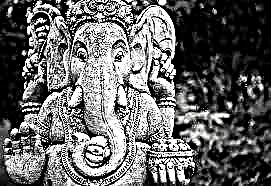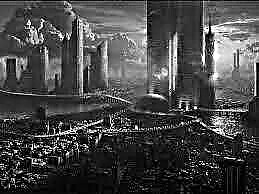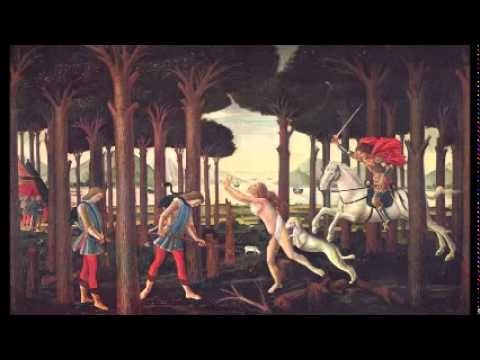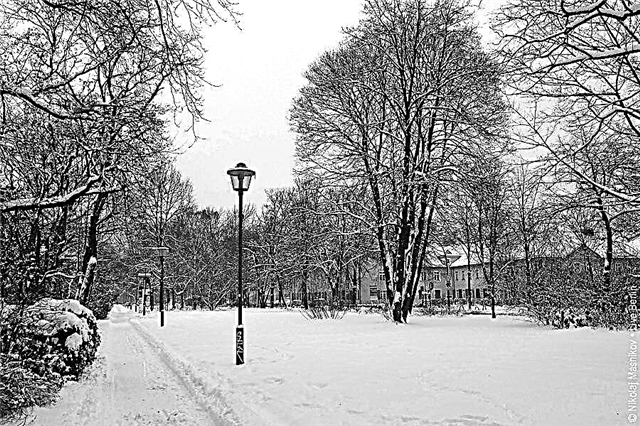The legend of the city of Kitezh is a chronicle - a certificate of genuine events. Until now, the people are telling about Kitezh with the seriousness and rigor of a genuine faith, and the “Kitezh chronicler” is revered as a book about the saint. In the literal sense, this is a book about the saint: the founder and martyr of Kitezh, Prince George Vsevolodovich, is counted among the saints by the Orthodox Church.
So, the written version of the Kitezh legend begins with the genealogy of “the holy noble and great prince George Vsevolodovich.” Suzdal Prince Yuri II (1189–1237), the hero of the ill-fated battle on the City River, the grandson of Yuri Dolgoruky, comes from the Pskov Prince Vsevolod Mstislavich, who, in turn, is credited with facts that are not relevant to historical reality: for example, conversion from paganism to Christianity. Following the legendary pedigree of Georgy Vsevolodovich, which ends in 6671 (1163), the story of his arrival from Pskov to the "Righteous and Grand Duke Mikhail Chernigovsky" and their friendly meeting. Georgy Vsevolodovich asks Prince Michael for "a letter in our Russia in the city of God’s church to build, so are cities." Prince Michael agrees and predicts Prince George "for this good deed <...> bribe on the day of the coming of Christ." Then, having ordered to write a letter, he goes himself to see off the guest. At that, 6672 (1164) years are indicated.
Prince George Vsevolodovich, the son of the holy Prince Vsevolod - Gabriel Pskovsky, was a great temple builder of Ancient Russia. He traveled around the cities and built churches. It is significant that the temples built by him were in honor of the Mother of God. In Novgorod, he built a church in the name of the Assumption, through Pskov traveled to Moscow and there he also erected the Assumption Church. In Rostov, he met with Andrei Bogolyubsky, erected a church in honor of the Mother of God and, gaining the relics of the enlightener of the Rostov land, Bishop Leonty, ordered Andrei Bogolyubsky to go to Murom and lay the church in the name of the Assumption there. He himself went to Yaroslavl, on the banks of the Volga River, sat in a plane and sailed down the Volga. The bailiff built the town of Small Kitezh there. The inhabitants of Small Kitezh prayed to the holy prince to bring the miraculous Theodorov icon of the Mother of God to their city, but "the image of that one won’t go from that place, don’t do anything," and in the place where the icon remained, the prince built a monastery.
From the Small Kitezh begins the "dry path" of Prince George.
He crossed the Kerzhenets river and arrived at Lake Svetloyaru. Seeing that "the place is great, it’s beautiful," he lays a hail named Bolshoy Kitezh on the shore of the lake. Digging ditches, erecting three churches (a church in the name of the Exaltation of the Holy and Life-giving Cross of the Lord, a church in the name of the Most Holy Theotokos of the Assumption and a church in the name of the Annunciation), twice measure the future city in length and breadth, and, finally, three years later the city was built. It happened in 6676 (1167). The city was two hundred fathoms long and one hundred and fifty wide.
Having built it, Prince George returns to Maly Kitezh and orders to measure the distance between the Big Kitezh and the Small Kitezh. Then, having given praise to the Almighty and ordered to write the book "Chronicler", he goes to his native Pskov. People accompany him with great honor. The faithful Prince George Vsevolodovich, when he arrived in his city, spent many days in prayer and fasting, giving alms to the poor.
Greater Kitezh stood on earth for only seventy-five years. In 6747 (1239), the wicked and godless king Batu came to Russia to fight. Prince George, already a deep old man, gathered his army in prayer and fought with Batu: the battle was great and bloody. Then the prince fled to Small Kitezh, shut himself up there for a while, and then, at night, secretly, retreated with the army to Big Kitezh. Batu took Small Kitezh, exterminated all the inhabitants and began to look for ways to the capital city of Kitezh. There was a traitor, Grishka Gorodnya, or Kuterma: not having endured the torment of the Tatars, he led them to the Great Kitezh "Batu track", which until now is shown in the Volga forests. Batu approached the Great Kitezh, attacked the city with his huge army. The army of Prince George is defeated under the walls of the city, but he himself fell in the battle of the fourth of February.
The following is the narrative of a miracle over the city of Kitezh, or rather, the apology of a miracle: with references to the lives of the Holy Fathers it is proved that “Great Kitezh will be invisible even before the coming of Christ” and that “in the last days and times this will happen, that the cities and monasteries will be sacred ". The legend of Kitezh knows three versions of the story about the invisible existence of the city.
According to one legend, the Great Kitezh hid the earth. His churches, cathedrals, holy gates, fences are now hidden in the ground, in the same place where they stood before the Batyev ruin. Under a large hill is the Cathedral of the Exaltation - in this place they pray for a long time and diligently, as in front of the main Kitezh shrine. Kitezhsky Gate is very close to the surface of the earth, only a quarter to two: when the peasants used to plow in this place in the past, it happened that their plow touched the crosses.
According to another version, the city of Kitezh took refuge in the bright waters of Lake Svetloyar. There, in the pure depths, its crosses shine, and from there comes its blessed ringing. They don’t go around Svetloyar in a boat, it’s a sin to swim in its sacred waters, a sin to fish: if you catch fish from Svetloyar, then it will not be in the Volga.
According to the third version, the city of Kitezh did not go down into the earth and did not hide under water: it stands on the same hills where it stood, the eight-pointed crosses of its temples glitter with gold, the assumption ringing is also buzzing, its walls and holy gates are also strong, righteous people and the priestly office also live - and only we, according to our sins, do not see this. This city is invisible to us, but those who have passed the path of feat and faith see with their eyes invisible cathedrals, cramped monastic cells.
Following this second, apologetic part, the story again briefly returns to historical events and personalities: it speaks of the “burial of honest relics” of Georgy Vsevolodovich, the murder of Prince Mikhail Chernigovsky and Boyar Fedor, then Mercury Smolensky by Batu. This third part ends with the indication that “the desolation of the Moscow kingdom and that Greater Kitezh” was in the summer of 6756 (1248).
Finally, the last, fourth part, beginning with the words “Is it possible that a person promises to truly go into it, and not falsely”, is a completely independent, little connected with the previous discussion about the ascetic’s path to the “innermost” Kitezh. We are talking about spiritual art and evil temptations preceding entry into a wonderful city or, as it is often called here, a monastery. At the end is the glorification of God, the Virgin and all the saints.












